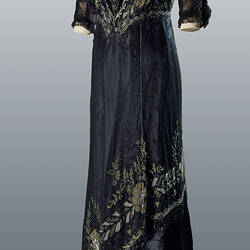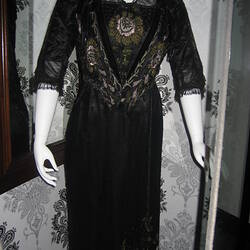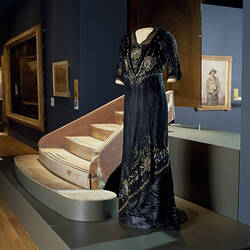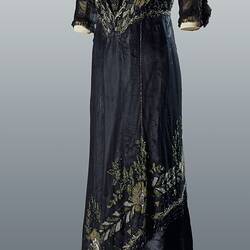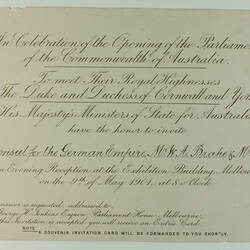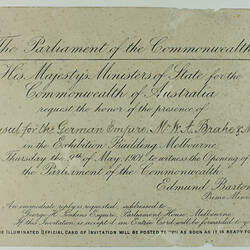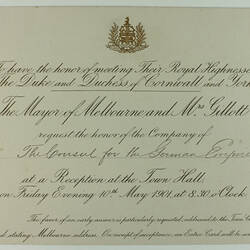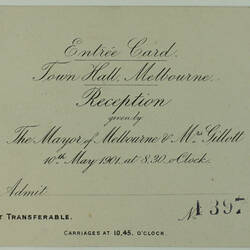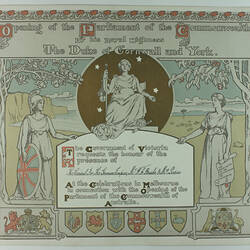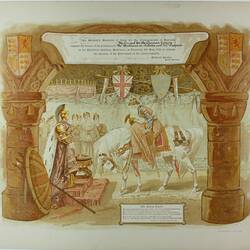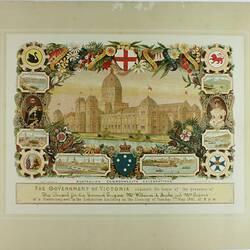Summary
Black dress worn by Mrs Sabina Peipers to the opening of Federal Parliament, held at the Royal Exhibition Building on Thursday 9 May 1901. It features in Museums Victoria's Melbourne Story exhibition.
On 9 May 1901, twelve thousand people made their way to the Exhibition Building in Carlton Gardens to witness the opening of the first Federal Parliament of the Commonwealth of Australia by the heir to the British throne, His Royal Highness the Duke of Cornwall and York.
Due to the recent death of Queen Victoria, royal etiquette demanded that all guests wore sombre colours such as black, white, grey or purple to the ceremony. This decree did not prevent the event from being a glittering affair. An extensive account of what select female guests were wearing was published in The Argus on 10 May. Evidence abounds that the ladies of Melbourne were au courant in their tastes, and an array of rich fabrics, trims, and decoration was on display: 'French gown of pale grey cloth, embroidered all over with grey silk and chenille in a scroll design of lilies, with open-work insertions of white lace between the leaves, the bodice having a draping of duchess point on one side, picture hat of palest Parma panne, trimmed with gauze and velvet roses in black and varying shades of purple.Very delicate shade of grey voile, made over accordion-pleated white silk. The dress had a bold floral design cut round skirt and across the bodice showing underdress of silk, the flowers being bordered lightly with steel, vest of folded chiffon and lace; smart hat, having two distinct brims in heliotrope glace, turned back from the face with bunches of flowers.'
Among the 3000 Victorian women invited to the opening at the Exhibition Building was Mrs Sabina Peipers; she accompanied her father, the Consul for the German Empire, Wilhelm Alexander Brahe. Seated in the first few rows of the east nave, W.A. Brahe and Mrs Peipers were at the heart of the celebrations. Though her outfit was not described in the papers, Mrs Peipers would have glittered in the black net and silk satin dress she had made for the occasion. The full length dress has ¾ length sleeves, a V neckline trimmed with black silk velvet ribbons, and a fishtail train. The base garment of black silk satin is lined with black wool crepe. A transparent outer garment of black silk net - heavily embroidered with green and grey floss silk, gold coloured metal threads in a leaf and flower pattern and metallic glass beads - rests over the silk satin.
The dress has some elements that reflect stylistic tastes of a slightly later period: notably the V neckline (which was introduced in 1903 but didn't become popular until the early teens), the slim columnar form, and the asymmetrical embellishment on the skirt. As this dress was donated to Museums Victoria with a very strong provenance, we have concluded that Mrs Peipers had it remodelled around 1910-1914 to reflect changing fashions; an indication that this was a very special object.
References:
The Argus, 10 May, 1901.
More Information
-
Keywords
social history, Australian Federal Parliament Opening Ceremony, 1901, Dress
-
Authors
-
Article types

